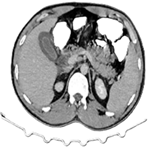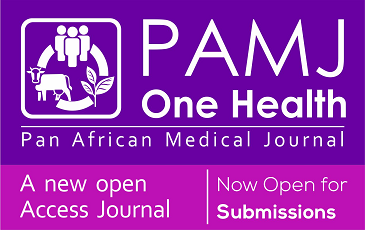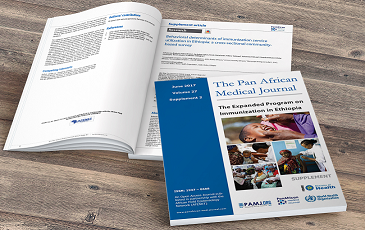Aspiration pneumonia with broncho-œsophageal fistula: a rare clinical image
Mansi Deshmukh, Lajwanti Lalwani
Corresponding author: Mansi Deshmukh, Department of Cardio Respiratory Physiotherapy, Ravi Nair Physiotherapy College, Datta Meghe Institute of Higher Education and Research, Sawangi (Meghe), Wardha, Maharashtra, India 
Received: 20 Feb 2024 - Accepted: 22 Mar 2024 - Published: 06 May 2024
Domain: Pulmonology
Keywords: Broncho-œsophageal fistula, aspiration pneumonia, endoscopy
©Mansi Deshmukh et al. Pan African Medical Journal (ISSN: 1937-8688). This is an Open Access article distributed under the terms of the Creative Commons Attribution International 4.0 License (https://creativecommons.org/licenses/by/4.0/), which permits unrestricted use, distribution, and reproduction in any medium, provided the original work is properly cited.
Cite this article: Mansi Deshmukh et al. Aspiration pneumonia with broncho-œsophageal fistula: a rare clinical image. Pan African Medical Journal. 2024;48:7. [doi: 10.11604/pamj.2024.48.7.43032]
Available online at: https://www.panafrican-med-journal.com//content/article/48/7/full
Images in clinical medicine 
Aspiration pneumonia with broncho-œsophageal fistula: a rare clinical image
Aspiration pneumonia with broncho-œsophageal fistula: a rare clinical image
&Corresponding author
Broncho-œsophageal fistulas (BEF) are rarer than tracheœsophageal fistulas and can occur at birth or later in life. They may develop in adults due to various causes like malignancy, trauma, or infection. Diagnosis involves bronchoscopy, gastrointestinal endoscopy, or radiologic imaging. Management depends on symptom severity, fistula location, and patient health. Palliative options include metallic stents or surgical œsophageal bypass. Metallic stents have shown superiority. A 25-year-old female presented with fever, cough, vomiting, and weight loss. Imaging revealed consolidation with cavitation in the lower lobe communicating with the œsophagus, diagnosed as aspiration pneumonia. Endoscopy confirmed a suspected bronchœsophageal fistula, treated with stenting (A). Revealed fistulous opening 30 cm from incisor teeth (B). Revealed guidewire passes across the fistulous and position confirmed fluoroscopically and endoscopically (C). Revealed œsophageal stent (fully covered metal stent 12cm x 25cmm) placement done by passing it over guidewire. Proximal end of stent was kept at 21cm from incisor teeth and lower end kept above G-E junction.
Figure 1: A) fistulous opening 30 cm from incisor teeth, B) guidewire passes across the fistulous and position confirmed fluoroscopically and endoscopically, C) œsophageal stent (fully covered metal stent 12cm x 25cm) placement done by passing it over guidewire; proximal end of stent was kept at 21cm from incisor teeth and lower end kept above G-E junction
Search
This article authors
On Pubmed
On Google Scholar
Citation [Download]
Navigate this article
Similar articles in
Key words
Tables and figures
 Figure 1: A) fistulous opening 30cm from incisor teeth, B) guidewire passes across the fistulous and position confirmed fluoroscopically and endoscopically, C) œsophageal stent (fully covered metal stent 12cm x 25cmm) placement done by passing it over guidewire; proximal end of stent was kept at 21cm from incisor teeth and lower end kept above G-E junction
Figure 1: A) fistulous opening 30cm from incisor teeth, B) guidewire passes across the fistulous and position confirmed fluoroscopically and endoscopically, C) œsophageal stent (fully covered metal stent 12cm x 25cmm) placement done by passing it over guidewire; proximal end of stent was kept at 21cm from incisor teeth and lower end kept above G-E junction










